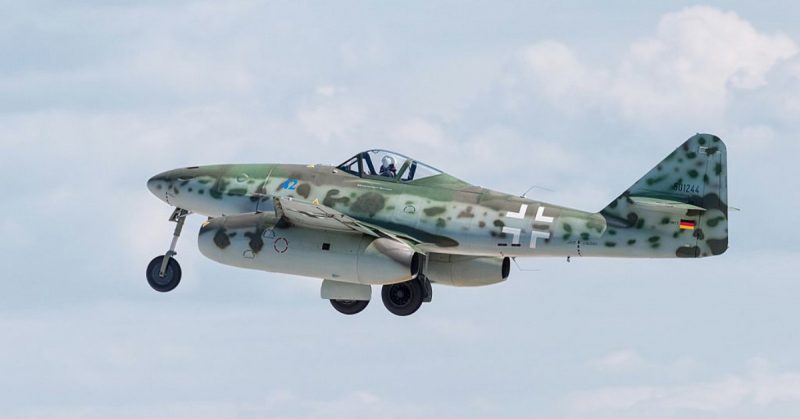With its distinctive smoke trail and explosive impact, the R4M was a notable weapon that earned the nickname “Hurricane.”
In the last year of the Second World War, the sound of rockets become a source of terror. Soaring out of blue skies to strike unsuspecting targets, V1 and V2 missiles crashed down on southern England, bringing destruction from out of nowhere.
These were just one of the ways in which German engineers used rocketry to deadly effect.
Jet Planes
During the First World War, Germany had been at the forefront of aerial warfare. Thanks to the innovations of Dutch engineer Anthony Fokker, German pilots often had the most advanced fighters in the sky.
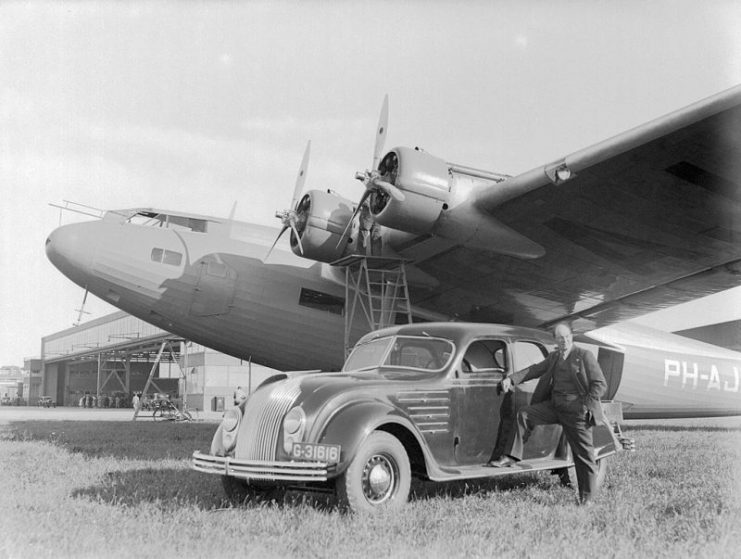
Between the wars, Germany was banned from having an air force. The Nazis developed one under cover of civil aviation projects, before unveiling it once it was too late for anyone to stop them.
By then, they had developed some impressive flying machines, but they were determined to take a greater leap forward by mastering jet planes.
In August 1939, days before the outbreak of the Second World War, the Heinkel He 178 had its first test flight. The creation of secretive German scientists, this was the first practically usable jet plane, and its existence remained concealed.
A year later, when the Italians made great publicity out of their first jet flight, they were in fact well behind their allies.
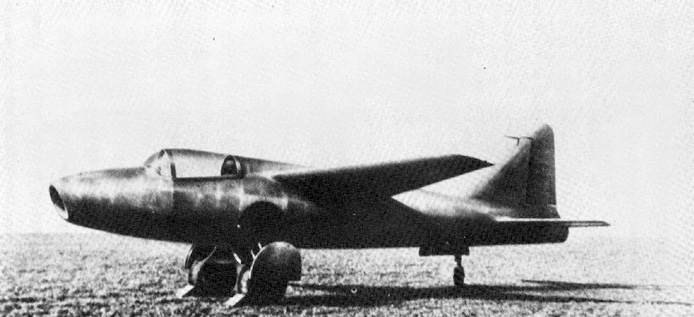
The Germans kept refining the work that had created the He 178, working on ways to make the principle of a jet fighter combat worthy. Though Heinkel was the first to launch a successful jet, Messerschmitt was the first to turn it into a working combat plane when the Me 262 entered service in April 1944.
The Me 262 had been repeatedly held back by technical challenges and the political conflicts that undermined the efficiency of the German war machine, but when it finally entered the war, it was a weapon to be reckoned with.
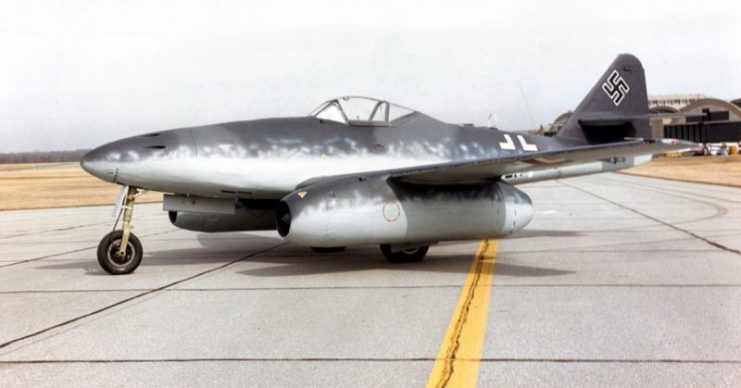
The fastest conventional aircraft in the fight, it carried heavier armament than any enemy fighter. It was also hugely versatile, being able to serve as a fighter, light bomber, reconnaissance plane, or even a night fighter.
With their superior speed and the benefit of surprise, Me 262 pilots soon started racking up the numbers of enemies shot down, reaching 542 by the end of the war.
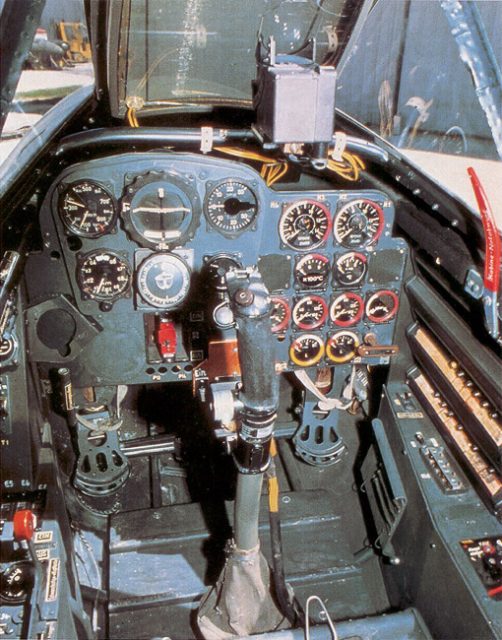
But within months of entering service, the Me 262 faced circumstances that kept it from its full potential. The Allied invasion of France put enemy bombers within easier reach of the airfields from which the Me 262 flew, and the Allies set about destroying these planes on the ground.
Those that survived struggled with fuel shortages as Germany’s supplies were cut off. One of the greatest planes of the war had arrived too late to tip the balance.
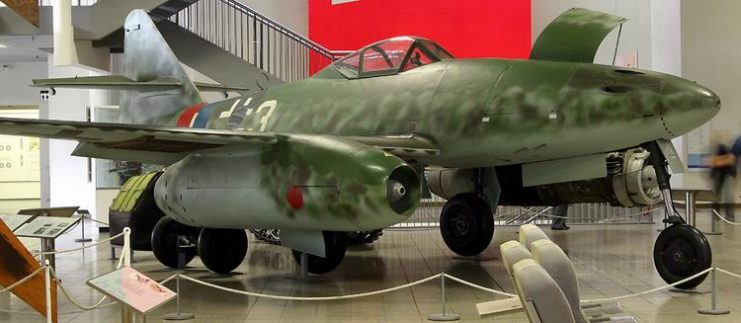
Air-to-Air Missiles
One of the Me 262’s advantages was that it was equipped with another novel German technology – the R4M air-to-air missile.
Like the Me 262, the R4M entered service in 1944, mounted on a limited number of Luftwaffe planes. Installed under the wing of a fighter, it could be used to devastating effect against enemy aircraft.
Even sturdy Allied bombers could be taken out with a single well-placed shot thanks to the shattering effect when the R4M’s 18-ounce warhead exploded.
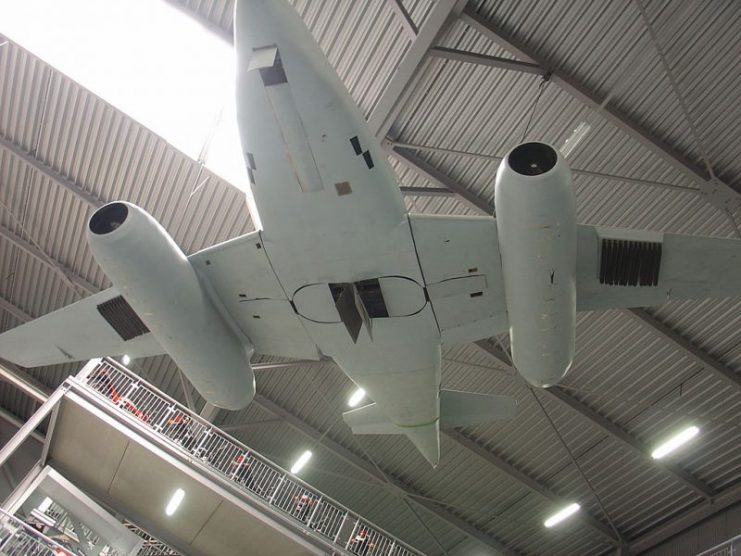
With its distinctive smoke trail and explosive impact, the R4M was a notable weapon that earned the nickname “Hurricane.” It added a lethal new aspect to aerial warfare, while a variant design was used to take out tanks.
Long Range Missiles
Many countries were developing rockets and jet aircraft, and several brought them into action by the end of the war. But only Germany achieved a radical and frightening new form of weapon: long-range missiles.

Photo: Sturmvogel 66 CC BY-SA 3.0-
The concept that became the V1 and V2 rockets was first proposed in 1936, but it would take eight years before these weapons saw action.
First in laboratories in Germany and then in secret testing grounds in conquered Poland, German engineers worked to create missiles that could carry an explosive warhead hundreds of miles to strike targets in another country.
British intelligence knew what the Germans were working on thanks to the efforts of resistance fighters, aerial reconnaissance, and a disgruntled German scientist. They launched bombing raids to hold back the development of the rockets but were unable to keep the genie in the box forever.
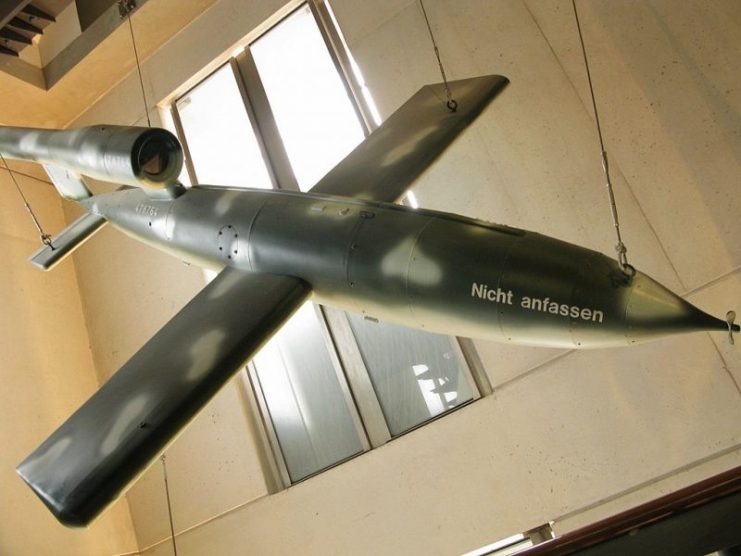
In June 1944, Germany launched the first V1 attacks in retaliation for the D-Day landings. Rather than strike targets near the front line, the V1s hit targets in Britain to spread fear and prove that no-one was untouchable by the might of the Reich.
In September, the V1 was followed into action by the V2. The first long-range guided ballistic missile, it was driven by a powerful liquid propellant rocket. Its arc carried it into space – the first man-made object to get there – and let it reach much further than the V1 could.
Even after the Allies overran V1 launch sites, V2s kept raining down on London.
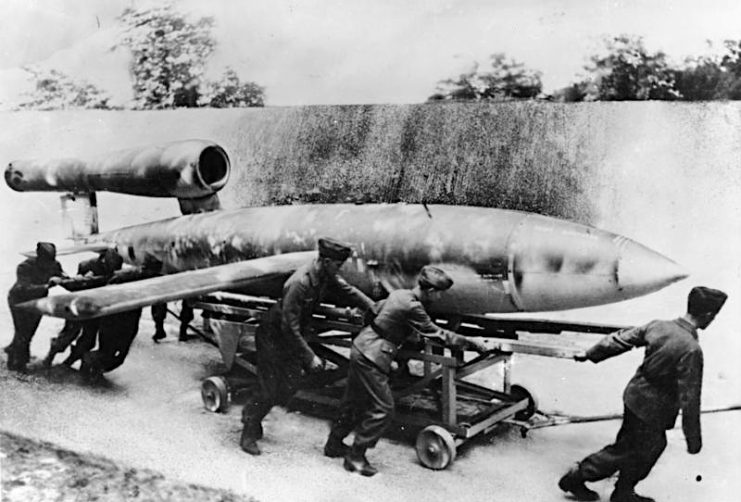
The V rockets caused terror and destruction across southern England. Stopping them became a high priority for the Allies. Teams of target plotters from the RAF and WAAF were put together to track down mobile launch platforms, and bombers were diverted to take them out.
Rocket Packs
Not every German rocket-powered invention saw use.
Developed in 1944, the Himmelstürmer flight pack was meant to let an individual stormtrooper take flight. It consisted of two jet engines strapped to the user’s back, one providing propulsion, the other direction and stability. Oxygen was force-fed into the tank to give it the power it needed.
The Himmelstürmer had a limited range, reaching 50 to 70 meters (55 to 77 yards). It could carry its wearer across obstacles and rough terrain, avoiding minefields and barbed wire, but couldn’t stay powered long enough to fight in the skies.
By the time the Himmelstürmer entered testing, the war was being lost. The resources and men weren’t available to complete testing, never mind put the jet pack into action.
American forces seized a prototype and took it home, but no-one was willing to risk flying it. It fed into the wider advancement of rocketry, but in itself was a dead end.
